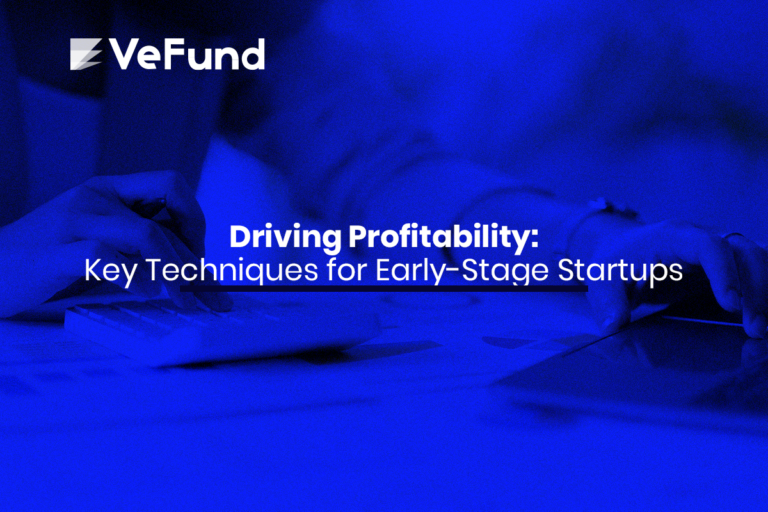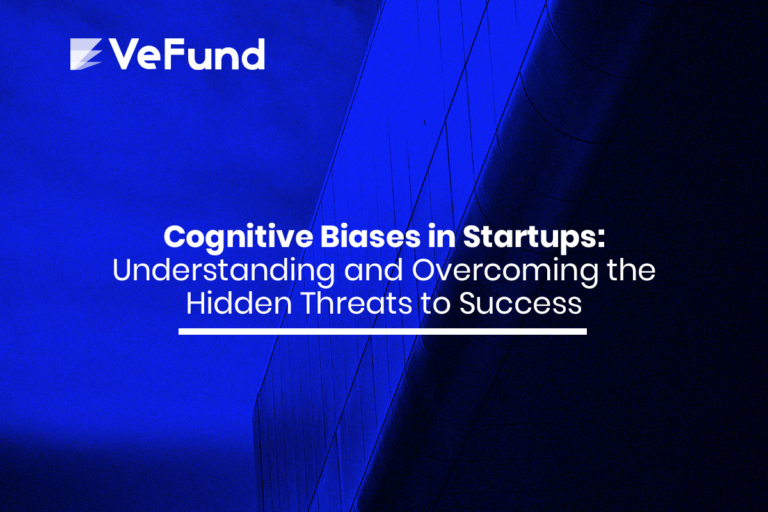Quantitative Valuation Methods for Startups: A Guide for VeFund’s Valuation Calculator
Valuation for startups takes different shapes due to the variety of startups and available information for valuation. All the methods can be categorized as quantitative or qualitative. You can check out when to use each category for your startup through our Quantitative v.s. Qualitative Valuation Methods article.
Here we will explore the quantitative methods used by VeFund for automated valuation. This article is suitable for anyone looking to use VeFund’s valuation calculator or understand the valuation techniques in general. The aim is to clarify the logic behind the quantitative valuation methods.
Before we start, we need to put things in perspective and quickly define what VeFund’s calculator is. VeFund’s automated valuation calculator is a tool we developed to value startups. We use a mix of five valuation methods: three quantitative and two qualitative.
The calculator then takes the weighted average of these five methods to arrive at the final valuation. These weights are assigned based on the startup’s stage of development, more on that here.
The core of this article is the three quantitative valuation methods:
- Venture Capital Method (VC).
- DCF Method.
- Multiples Method.

Now that we have a clear overview, let’s dive into the logic behind these three methods:
1. Venture Capital Method (VC)
As the name implies, this method is one of the most used valuation methods for startups. Other methods may or may not work for some startups. However, the VC method’s simplicity allows it to be applicable to any startup, no matter its stage of development.
The key is to forecast how much returns the startup is likely to make in a specific period: typically three to five years. Then define how much return on investment (ROI %) the investor is expecting to make. Based on these three parameters, we can estimate the startup’s valuation.
As we see from the equation, discounting by the ROI, dividing by (1+ROI)^time, results in what is called post-money valuation. This is the company’s valuation including the funding the investor provided. We need, however, to calculate the startup’s value without this fund, or what is called pre-money valuation. Investors need to know the startup’s worth without their money included. We calculate the pre-money valuation simply by subtracting the funding required from the post-money valuation.

How We Value Startups with the VC Method on VeFund:
We automated the process with readily available parameters to lift as much weight from the founder as much as we can. Here is our approach:
- Forecasting returns: the founder inputs their forecasts over a three-year period. We then multiply the EBITDA of the third year forecast by a readily-available industry multiple. This shows the company’s value given its forecasted performance and the value of similar companies within the industry.
- ROI: readily-available estimation based on the company’s stage of development.
- Time: three years default.
- Capital needed: provided by the founder.
As a founder using VeFund’s valuation calculator, you will only provide the calculator with your forecasts and the required fund. The calculator will take care of the rest.
2. Discounted Cash Flows (DCF)
The DCF method is preferred by many practitioners. It has been in use ever since the 1700s. It survived this long because it deals directly with the expected cash flows, accounting for potential revenues as well as expenditures. Simply put, the DCF is all about the #1 factor investors care about: cash.
The logic behind the DCF is to forecast the expected returns by accounting for all the financial details within the company. After that, we discount these “cash flows” by the associated risks impacting the company.
How We Value Startups with the DCF Method on VeFund:
A great feature of the DCF method is you can account for any number of risks. At VeFund, we account for the following:
- The equity risk → the risk to invest in companies based on location and industry.
- The survivability risk → the odds of survival for the startup.
- The illiquidity risk → the risk of not finding a seller when trying to sell the company’s stock
As a user, all you will need to do is estimate your financial forecasts. The calculator will take care of the rest and show your valuation results right away.

3. Multiples Method
So far, the previous two valuation methods were based on estimating the company’s own earnings. The multiples method too needs the estimated earnings. However, unlike the VC and DCF, it is not the whole story.
The multiples method uses the forecasted earnings and compares them to the earnings and valuation of similar companies out there. It answers the question “what is a reasonable price based on the prices of similar companies out there?”.
How We Value Startups with the multiples Method on VeFund:
VeFund’s valuation calculator uses the same estimated forecasts for your startup. We then use valid readily-available data for the median valuation of other companies within the same industry as the subject startup. The result is a market-based valuation showing where your startup stands against its peers.
Final Thoughts
As we saw, every quantitative valuation method explained measures the startup from a slightly different angle:
- The venture capital method measures the startup based on the expectations of investors.
- The DCF method measures the startup based on expected cash flows and associated risks.
- The multiples method measures the startup based on the valuation of its peers in the same industry.
Mixing these valuation methods, along with the qualitative ones, results in a holistic view of the company. This ensures featuring what is unique about the valued startup. Viewing the numerical results immediately helps the trained eye understand your company’s uniqueness and strength.
All it takes to get a detailed valuation based on these 3 quantitative & 2 other qualitative methods is signing up with VeFund’s valuation calculator and walking step by step through the questions to your startup’s valuation.







